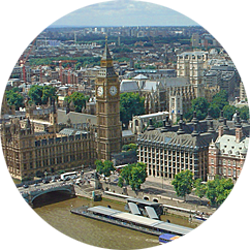
<< Go Back up to Historic Theatre Photography Home

 .
.
The Aldwych Theatre opened in 1905, designed as a pair with the Waldorf Theatre (now Novello Theatre) at the opposite end of the block. Both theatres were designed by W.G.R. Sprague. The Aldwych was the Royal Shakespeare Company’s base in London for many years after 1960.
This page is under construction, please check back soon.
The Blackpool Grand Theatre was designed by Frank Matcham and opened in July 1894.
This page is under construction, please check back soon.
The Blackpool Opera House opened in 1939, designed in the Art Deco style by architect Charles McKeith, and replacing the earlier Opera House which had opened in 1899.
This page is under construction, please check back soon.
The 900-seat Buxton Opera House opened in 1903 and was designed by renowned UK theatre architect Frank Matcham. In part due to its location in a rural area of the country, it survives as one of the best preserved examples of Matcham’s theatre designs.
This page is under construction, please check back soon.
The Everyman Theatre in Cheltenham opened in October 1891 as the New Theatre and Opera House, seating 1,500 and designed by renowned UK theatre architect Frank Matcham. The theatre was renamed the Everyman Theatre in 1960.
This page is under construction, please check back soon.
The Georgian Theatre Royal was built by actor-manager Samuel Butler and opened in Richmond, North Yorkshire, in 1788. It is one of the oldest working theatres in the United Kingdom.
This page is under construction, please check back soon.
The Grand Opera House opened in December 1895 presenting variety, music hall (vaudeville) and circus acts. The theatre was designed by prolific UK theatre architect Frank Matcham. The theatre was used as a cinema for a period however now hosts musicals, drama, ballet, opera, and comedy performances as well as educational events and tours.
This page is under construction, please check back soon.
The Grand Opera House in York opened in 1902, designed by architect John P. Briggs. The theatre was built by adapting an old corn exchange (opened in 1868) and an adjacent warehouse.
This page is under construction, please check back soon.
The 1,400-seat His Majesty’s Theatre opened in December 1906, designed by renowned UK theatre architect Frank Matcham.
This page is under construction, please check back soon.
The London Palladium opened in December 1910 and is known throughout the world as the home of Variety. Out of all the theatres in the UK and London which have hosted the annual Royal Variety Performance, the London Palladium has hosted the annual variety extravaganza the most number of times, by far.
This page is under construction, please check back soon.
The Normansfield Theatre was built as part of Normansfield Hospital, a self-sufficient hospital complex built by Dr. John Langdon Down in the late 1870s. Pioneering research into what’s now know as Down Syndrome took place at the hospital. The theatre is now held in care by the Landon Down Centre Trust.
This page is under construction, please check back soon.
One of Glasgow’s oldest theatres, the Pavilion Theatre of Varieties opened on 29 February 1904 as a music hall. The theatre was designed by UK theatre architect Bertie Crewe and is well-known in the City as being the peoples’ theatre of Glasgow.
This page is under construction, please check back soon.
The Royal Albert Hall, in the South Kensington area of London, was opened in March 1871 by Queen Victoria. The nearly 5,300-seat concert hall has played host to the world’s leading artists from many different genres, and has been home to the BBC Proms every year since 1941.
This page is under construction, please check back soon.
The 950-seat Royal Hall in Harrogate, UK, was designed by noted UK theatre architect Frank Matcham and opened in May 1903.
This page is under construction, please check back soon.
The Theatre Royal opened in September 1865, designed by noted UK theatre architect C.J. Phipps. The theatre underwent a major renovation that was completed in 1977. Since then, the theatre has been – and continues to be – at the heart of theatre in Nottingham, over 150 years later.
This page is under construction, please check back soon.
The theatre first opened as the New Theatre in 1744, although did not gain a Royal Patent for the presentation of the spoken word until 1769 at which time at which time it became known as the Theatre Royal.
This page is under construction, please check back soon.
The Blackpool Tower Circus opened in May 1894, designed by renowned theatre architect Frank Matcham.
This page is under construction, please check back soon.
Photographs copyright © 2002-2025 Mike Hume / Historic Theatre Photos unless otherwise noted.
Text copyright © 2017-2025 Mike Hume / Historic Theatre Photos.
For photograph licensing and/or re-use contact us here  . See our Sharing Guidelines here
. See our Sharing Guidelines here  .
.
| Follow Mike Hume’s Historic Theatre Photography: |  |
 |